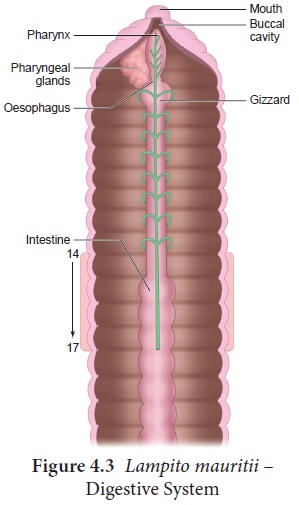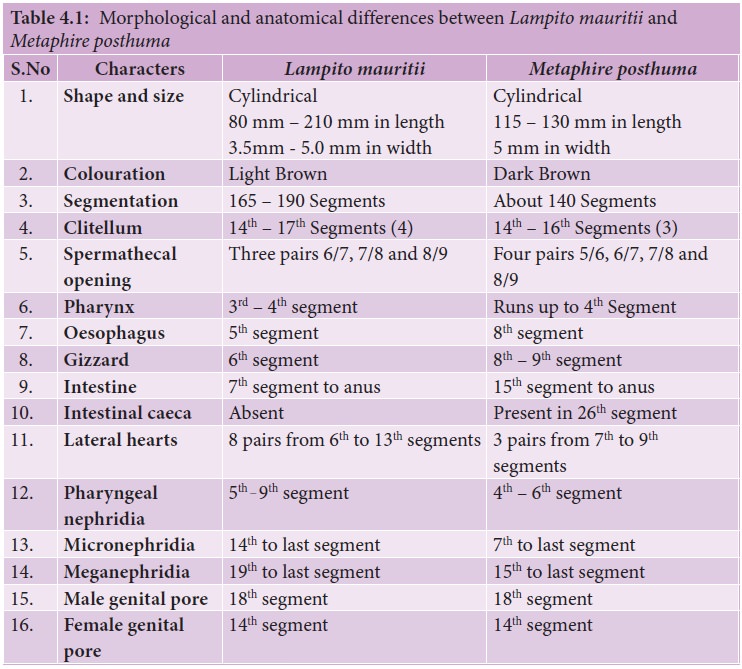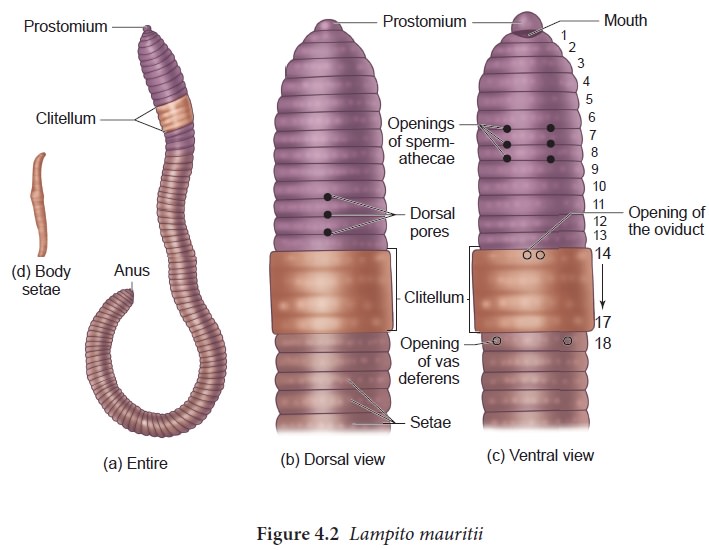Chapter: 11th Zoology : Chapter 4 : Organ and Organ Systems in Animals
Digestive, Respiratory system of Earthworm (Lampito mauritii) Anatomy
Anatomy
The body wall of the earthworm is very moist, thin, soft, skinny, elastic and consists of the cuticle, epidermis, muscles and coelomic epithelium. The epidermis consists of supporting cells, gland cells, basal cells and sensory cells. A spacious body cavity called the coelom is seen between the alimentary canal and the body wall. The coelom contains the coelomic fluid and serves as a hydrostatic skeleton, in which the coelomocytes are known to play a major role in regeneration, immunity and wound healing. The coelomic fluid of the earthworm is milky and alkaline, which consists of granulocytes or eleocytes, amoebocytes, mucocytes and leucocytes.
Digestive system
The digestive system of the earthworm consists of the alimentary canal and the digestive glands. The alimentary canal runs as a straight tube throughout the length of the body from the mouth to anus (Figure 4. 3). The mouth opens into the buccal cavity which occupies the 1st and 2nd segments. The buccal cavity leads into a thick muscular pharynx, which occupies the 3rd and 4th segments and is surrounded by the pharyngeal glands.

A small
narrow tube, oesophagus lies in the 5th segment and continues into a muscular
gizzard in the 6th segment. The gizzard helps in the grinding of soil particles
and decaying leaves. Intestine starts from the 7th segment and continues till
the last segment. The dorsal wall of the intestine is folded into the cavity as
the typhlosole. This fold contains blood vessels and increases the absorptive
area of the intestine. The inner epithelium consists of columnar cells and
glandular cells. The alimentary canal opens to the exterior through the anus.
The
ingested organic rich soil passes through the digestive tract where digestive
enzymes breakdown complex food into smaller absorbable units. The simpler
molecules are absorbed through the intestinal membrane and are utilized. The
undigested particles along with earth are passed out through the anus, as worm
castings or vermicasts. The pharyngeal or salivary gland cells and the
glandular cells of the intestine are supposed to be the digestive glands which
secrete digestive enzymes for digestion of food.
Respiratory System
The
earthworm has no special respiratory organs like lungs or gills. Respiration
takes place through the body wall. The outer surface of the skin is richly
supplied with blood capillaries which aid in the diffusion of gases. Oxygen
diffuses through the skin into the blood while carbon dioxide from the blood
diffuses out. The skin is kept moist by mucous and coelomic fluid and
facilitates exchange of gases.

Related Topics
